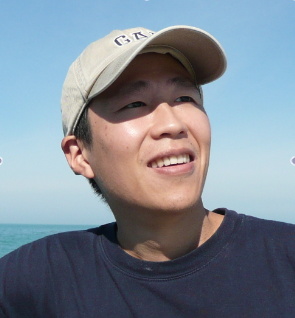Early-Type Galaxies with Radio Jets
Contact

| Yen-Ting Lin |
|---|
| Institute of Astronomy and Astrophysics, Academia Sinica |
Summary
We are investigating whether the presence whether the presence of radio jets from supermassive black holes could suppress star formation activity in early type galaxies. A sample of 50 radio galaxies (RGs) is constructed, for which the optical spectral signatures measured from SDSS are indicative of suppression of star formation with the presence of dissipative jets. With spatially resolved spectroscopy from MaNGA, we will examine the spectral behavior in regions along and off the jet direction, and may catch quenching processes in action.
Finding Targets
An object whose MANGA_TARGET3 or MNGTARG3 value includes one or more of the bitmasks in the following table was targeted for spectroscopy as part of this ancillary target program. See SDSS bitmasks to learn how to use these values to identify objects in this ancillary target program.
| Program (bit name) | Bit number | Target Description | Target Density (deg-2) | Number of Targets |
|---|---|---|---|---|
| RADIO_JETS | 15 | Radio Galaxies with Jets | 0.01 | 50 |
Description
In Lin et al. (2010; hereafter L10), through the comparison of optical spectra of RGs of different radio morphologies, we reported a curious dependence of properties of optical spectrum on the radio morphology, for RGs with optical luminosity close to L*. For those with FRII morphology (that is, with hot spots close to the edges of radio lobes), the optical spectrum is that characteristic of Seyfert nuclei. For those with a prominent jet coincident on the host galaxy (hereafter referred to as “twin-jets”), we observed a redder continuum and lack of emission lines such as Hα and O[III], compared to radio quiet galaxies of similar velocity dispersion and structure.
The simplest explanation of this result is that, while there are still low-level star formation activities in these ~L* radio-quiet elliptical galaxies, the jets have removed cold gas that was maintaining star formation in the RGs. However, it is likely that not all jets would have the same suppression effect on star formation; as discussed in L10, only jets that are quickly decelerated (or flared) after leaving the nuclei may have the maximal impact on the interstellar medium of the host galaxies. For powerful jets like those in FRIIs, their “cross section” within the host galaxies is expected to be small, and thus could affect larger scale environments (i.e., tens or hundreds of kpc scales) more effectively than the host galaxies themselves.
These findings were based on the single fiber spectroscopy from SDSS. Given that the RG sample used in L10 has a median redshift of ~0.1, the above discussion applies only to central regions corresponding to a physical size of about 6 kpc. In this program, we will use MaNGA data to examine this picture in more detail. We have selected ~L* RGs of three radio morphologies: (1) FRII, (2) “fat-double” (that is, RGs without apparent hot spots at the edges and without strong jets close to the host galaxy), and (3) twin-jet. Our primary goal is to investigate whether the star formation activity is reduced in regions along the jet direction with respect to that in regions off the jets. We have shown in L10 that, by analyzing their line diagnosis, the twin-jets are significantly more quiescent compared to the matched radio quiet counterparts (in the sense of lacking most of the emission lines). We thus expect to see the jet suppression effect for most of such objects in our sample.
Target Selection
We draw our galaxies from the RG sample constructed in L10 (which was based on SDSS DR6 main sample), and consider galaxies with stellar surface density between 5×108 and 2×109 Msun/kpc2, supermassive black hole mass in the range (1-4)x108 Msun (inferred from the MBH–σ relation of Tremaine et al. 2002), and dynamical mass between 2×1011 and 5×1011 Msun. These requirements are to ensure we have galaxies of similar central engine, structure, and gas reservoir.
REFERENCES
Lin et al., 2010 , ApJ, 723, 1119
Tremaine et al., 2002, ApJ, 574, 740


